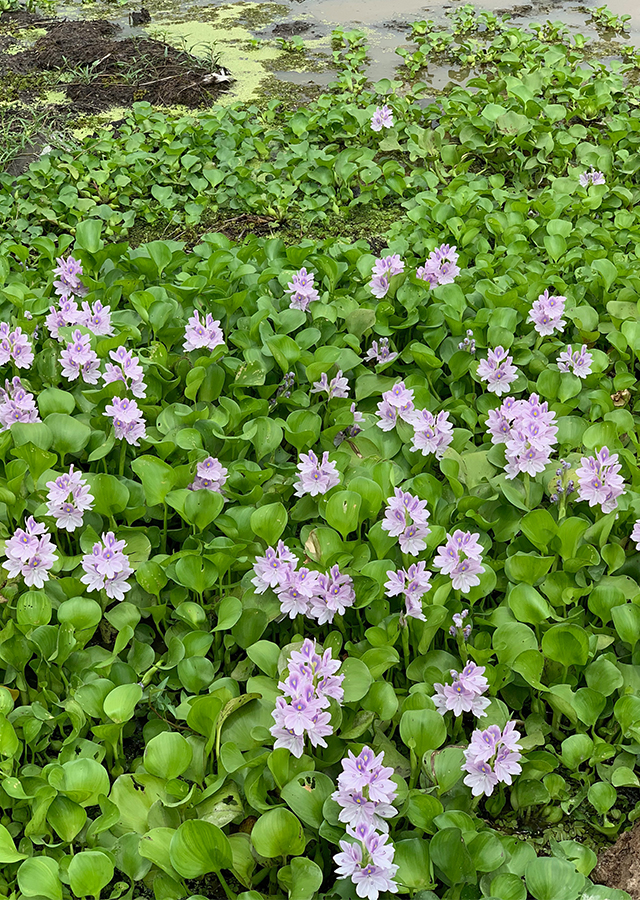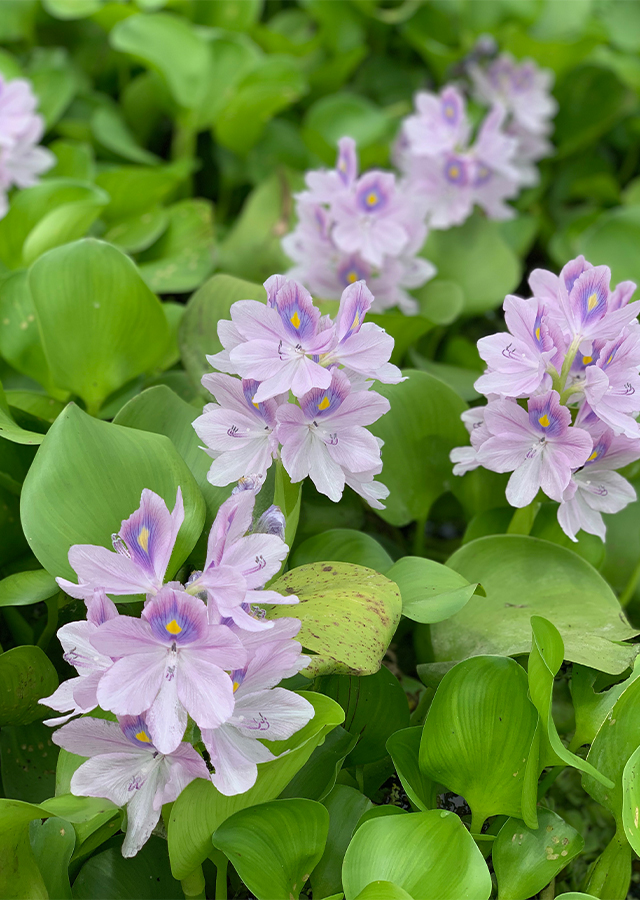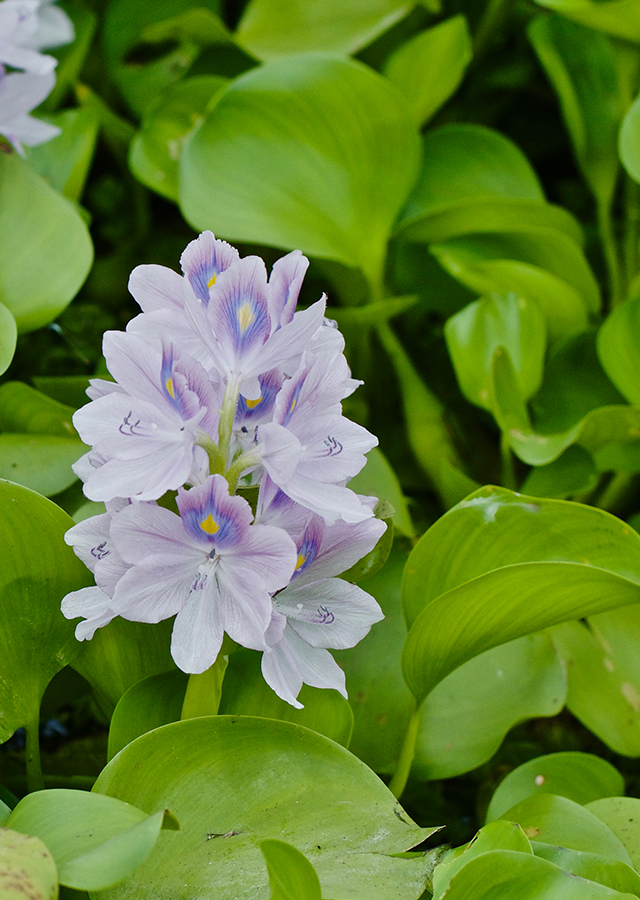Water Hyacinth
Pontederia crassipes Mart.
Pontederiaceae
Location in our garden
Aquatic



Synonym
- Eichhornia crassipes (Mart.) Solms
- Eichhornia cordifolia Gand.
- Eichhornia crassicaulis Schltdl.
- Eichhornia crassipes (Mart.) Solms
- Eichhornia speciosa Kunth
- Heteranthera formosa Miq.
- Piaropus crassipes (Mart.) Raf.
- Piaropus mesomelas Raf.
- Pontederia crassicaulis Schltdl.
- Pontederia elongata Balf.
Habitus
Aquatic. Aquatic herb that grows 50-100 cm tall.
Part Used
Leaves
Fruit
Roots
Stem
Growing Requirements
Full Sunshine
High Rainfall
Habitat
Aquatic
Overview
Water hyacinth is a free floating plant native of Brazil. This plant is known as one of the world's most invasive aquatic weeds due to its fast spread and a source of biomass. It may be used as a phytoremediation agent, because of its ability to grow in heavily polluted water and its capacity to accumulate metals, radionuclides and other pollutants.
Vernacular Names
Hotel aoi (Japanese), Karisalanganni (India), Waterhyacint(Netherland), Jacinthe d'eau (French), Topische wasserpest (German), Aguapes(Brazil).
Agroecology
Water hyacinth can succeed in a variety of climates from the subtropical to the tropical zones. It grows best in areas where annual daytime temperatures are within the range 20-35 °C. It prefers a mean annual rainfall in 1,000-3,000 mm. Prefers a pH in the range 6.7-7.3.
Morphology
- Root - fibrous, floating or sometimes rooting.
- Leaves - glabrous, 45-110 x 50-100 mm; broadly ovate to rhomboid, base cuneate or rounded. Petiole glabrous/ spongy, 6-30 cm long, with a fusiform bulbous portion about the middle.
- Flowers - lilac, tinged blue, withering soon. Perianth 57 mm long, tube green, glandular; segments 34-40 mm long, posterior segment with a yellow spot.
- Fruit - an ovoid capsule.
- Seed -coat acts as a physical barrier to germination for 15 years.
Cultivation
- Propagated by seeds.
- By stolons - multiplying very fast.
Chemical Constituents
Cellulose, alkaloids, flavonoids, phenols, sterols, terpenoids, anthroquinones, anthocyanins, shikimic acid, phytol asetate, methyl ester.
Traditional Medicinal Uses
- It has antiviral activity that is used to treat influenza viruses.
- Extracts of fresh plant showed significant and remarkable activity against two bacteria (Micrococcus luteus and Rhodospirillum rubrum) and two fungi (Monoscus ruber and Aspergillus fumigatus).
- It showed high free radicals scavenging ability.
- In Chhattisgarh, India, it is used as styptic. Fresh juice of plant used to treat fresh wounds to stop the spread of infection.
- In Tamil Nadu, India, flower oil applied daily treatment of skin diseases; in Assam, India, flowers and roots used for stomach ache; roots used in the treatment of pneumonia.
- In Bangladesh, roots and flowers used in the treatment of hepatic disorders.
- In Nigeria, the plant is used for skin care.
Part Used
Reference Sources
- Cardoso, S.F., Lopes, L.M.X., & Nascimento, I.R. (2014). Eichhornia crassipes: An advantageous source of shikimic acid. Revista Brasileira de Farmacognosia Vol. 24(4): 439-442. https://www.sciencedirect.com/science/article/pii/S0102695X14000568. 11-02-2021.
- Fern, Ken. (2019). Useful Tropical Plants Database. Eichhornia crassipes. http://tropical.theferns.info/viewtropical.php?id=Eichhornia+crassipes. 11-02-2021.
- Flora of Pakistan. (No date). Eichhornia crassipes. http://www.efloras.org/florataxon.aspx?flora_id=5&taxon_id=200027394. 11-02-2021.
- Stuarxchange. (2019). Philippine Medicinal Plants. Water hyacinth. http://www.stuartxchange.org/WaterHyacinth. 02-02-2021.


